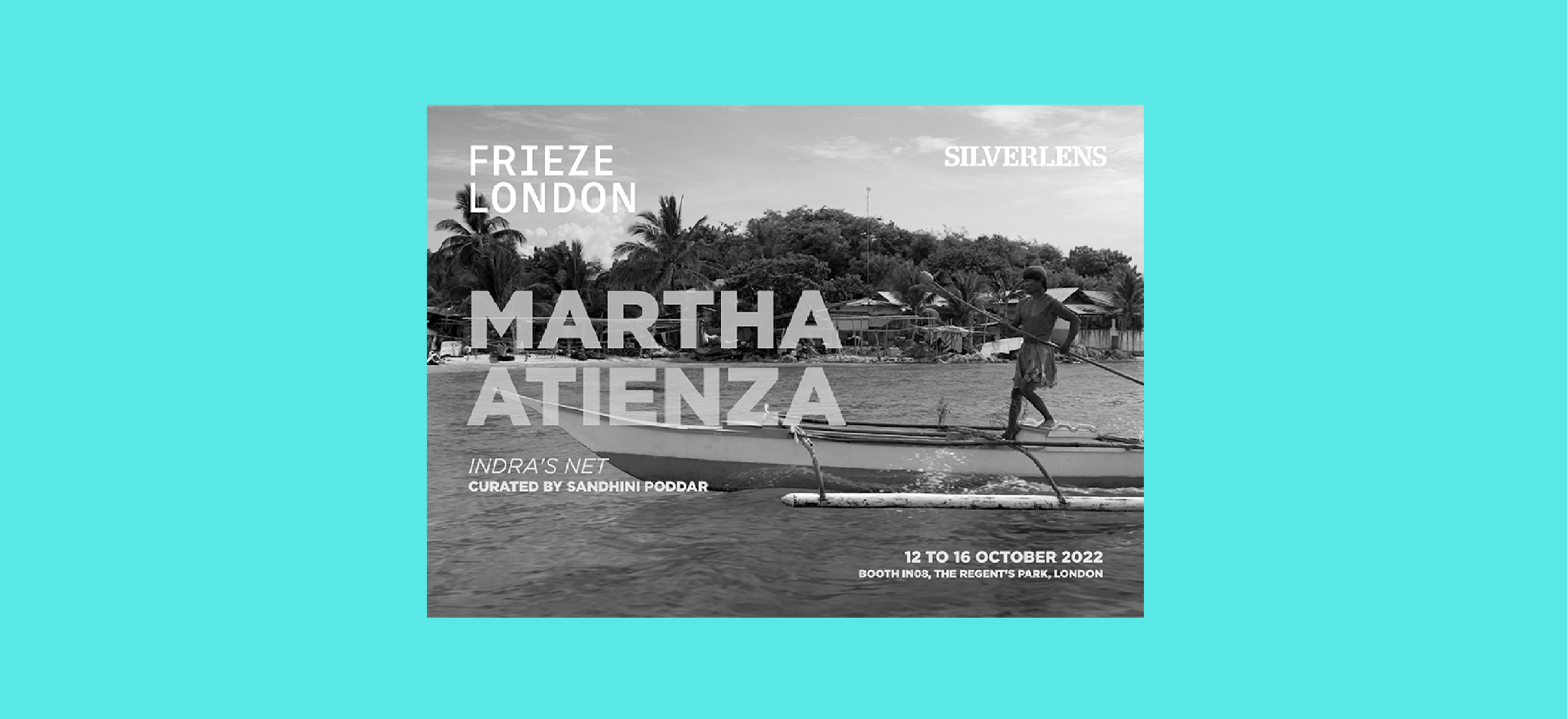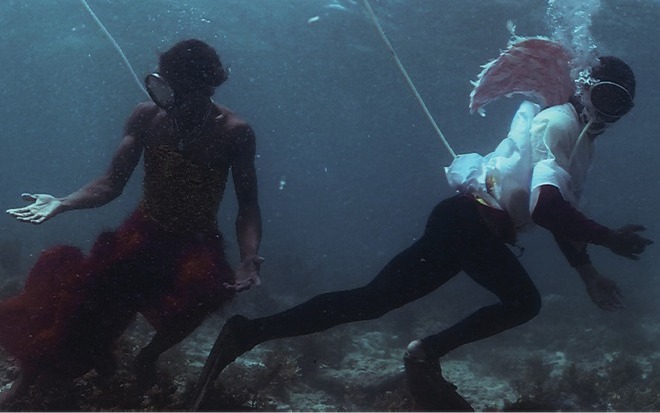
Frieze London: Indra's Net
Martha Atienza
Curated By Sandhini Poddar
Booth IN08, Regent's Park, London
About
Martha Atienza is a multidisciplinary artist who resides on Bantayan Island, north of Cebu Island, within the large archipelago of the Philippines. Often collaborating with her brother Jake, who is an academic, as well as diverse resident community groups, Atienza’s practice in video, photography, and video, is focused on “the people, the sea, and the land”. She is passionate about galvanizing support for local fisherfolk as well as advocating for further marine-protected areas along the coastline, which is suffering from erosion. Recently, Atienza established the Adlaw sa mga Mananagat Bantayan (Fisherfolks Day). This festival seeks to represent 37 fishing communities in one ecosystem; by being on the water together, fisherfolk stories are shared with deeper respect. At Frieze, Atienza positions Antonio Dacomos Turib as the protagonist of her meditative video, Tigpanalipod (The Protector) 11°02’06.4” N 123°36’24.1” E, 2022. See www.goodland.ph for more details on the delicate relationship between labour, governance, tourism, and the environment on Bantayan.
– Sandhini Poddar
Born to a Dutch mother and Filipino father, Martha Atienza (b. 1981, Manila, Philippines; lives and works in Bantayan Island, Philippines) has moved between the Netherlands and the Philippines throughout her life. Constantly oscillating between these two cultures has had a profound influence on Atienza’s focus as an artist.
Atienza’s practice explores installation and video as a way of documenting and questioning issues around environment, community and development. Her work is mostly constructed in video, of an almost sociological nature, that studies her direct environment. Often utilizing technology in the form of mechanical systems, Atienza explores the immersive capacity of installation in generating critical discourse. Her work tends to be collaborative in nature, working with people from different backgrounds and expertise as well as residents of Bantayan Island, where her family is from, whose narratives are intricately woven into issues such as environmental change, displacement, cultural loss, governance and socioeconomic disparities.
Atienza’s practice explores installation and video as a way of documenting and questioning issues around the environment, community, and development. Her work is mostly constructed in video, of an almost sociological nature, that studies her direct environment.
Tigpanalipod 11° 02’ 06 .4” N 123° 36’ 24.1” E (1) The Protectors 11° 02’ 06 .4” N 123° 36’ 24.1” E (1)
Single-channel (00:74:05 min. loop), no sound
Edition of 6 + 2 AP
For the past three to five years, Tigpanalipod (the Protectors) 11°02’06.4”N 123°36’24.1”E has emerged alongside necessary acts of remembering and demands for participation. Proudly standing on the bangka, fishing boat, nong Antonio Dacomos Turib’s family came from the surrounding islands of Cebu and Negros in the last century. They came to Mambacayao Dako with the fishing season, and decided to settle permanently on the island generations ago. It brings to light longstanding issues of land ownership and class, as families like Antonio’s are currently being forced to relocate to off-island government and nongovernment public housing projects.
Antonio joins the Fluvial Parade of Mambacayao Dako Fiesta yearly. He decorates his boat and is one of the only people that dresses in complete costume to match. On the day of filming, he arrived in costume.

